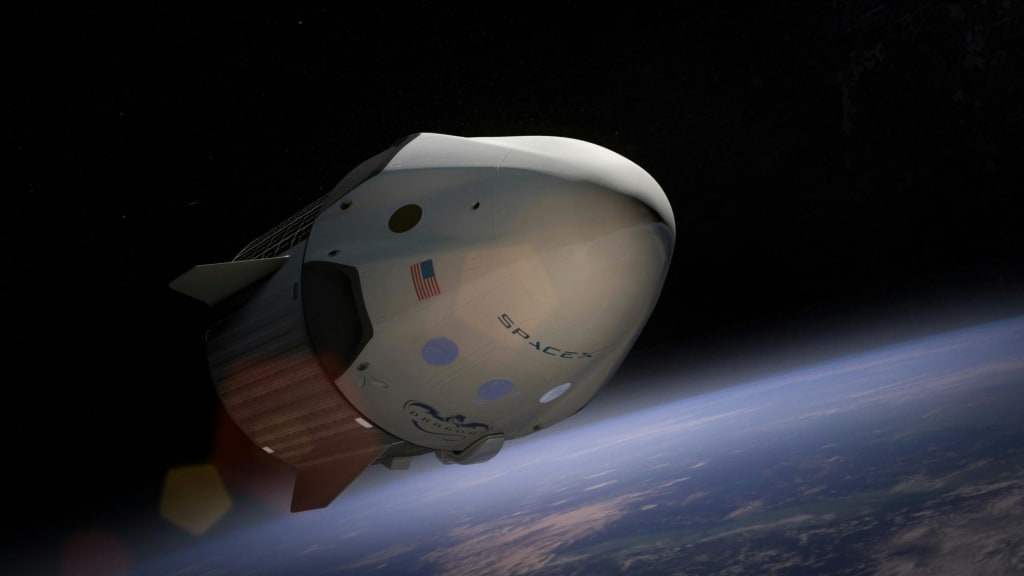The Economics of Space Tourism: Will It Become Affordable for Everyone?
Exploring the potential future of space tourism and its accessibility to the general public.

The Rise of Space Tourism.
Space tourism, once a distant dream, is now becoming a reality. With the advancements in technology and the increasing interest in space exploration, the idea of traveling to space for leisure is gaining momentum. The rise of space tourism can be attributed to several factors, including the growing number of private space companies, the development of reusable rockets, and the increasing demand for unique and extraordinary experiences. As more companies enter the space tourism market, the costs associated with space travel are expected to decrease, making it more accessible to a wider audience.
Another key factor contributing to the rise of space tourism is the increasing number of successful missions and milestones achieved by private space companies. Companies like SpaceX and Blue Origin have successfully launched and landed reusable rockets, making space travel more cost-effective and sustainable. These achievements have sparked excitement and interest among the general public, further fueling the growth of the space tourism industry.
Current Costs and Accessibility.
Currently, space tourism remains an exclusive and expensive endeavor, accessible only to a privileged few. The cost of a trip to space can range from millions to tens of millions of dollars, making it unaffordable for the majority of people. The high costs are primarily due to the complex and expensive nature of space travel, including rocket development, spacecraft construction, and mission operations.
In addition to the financial barrier, accessibility is also limited by the availability of space tourism services. Currently, only a handful of companies offer space tourism experiences, and the number of seats available is limited. As a result, the demand far exceeds the supply, further driving up the costs and restricting accessibility.
Factors Influencing Affordability.
Several factors play a significant role in determining the affordability of space tourism. One of the key factors is the economies of scale. As the space tourism industry matures and more companies enter the market, the costs associated with space travel are expected to decrease. With increased competition and advancements in technology, economies of scale can be achieved, leading to cost reductions in various aspects of space travel, including rocket launches, spacecraft manufacturing, and mission operations.
Government policies and regulations also play a crucial role in influencing the affordability of space tourism. Supportive policies that encourage private investment in space tourism can lead to increased competition and innovation, ultimately driving down costs. Additionally, partnerships between government agencies and private companies can help share the financial burden of space travel and make it more affordable for a wider audience.
Another factor influencing affordability is technological advancements. As technology continues to evolve, new innovations and breakthroughs can significantly reduce the costs associated with space travel. For example, the development of reusable rockets has already proven to be a game-changer in terms of cost reduction. Further advancements in areas such as propulsion systems, materials science, and life support systems can lead to even greater cost savings in the future.
Technological Advancements and Cost Reduction
Technological advancements have played a crucial role in driving down the costs of space travel and making it more affordable. One of the most significant advancements is the development of reusable rockets. Traditional rockets were single-use and would be discarded after each launch, making space travel prohibitively expensive. However, companies like SpaceX and Blue Origin have successfully developed reusable rockets that can be landed and used for multiple missions. This breakthrough has drastically reduced the costs associated with rocket launches and made space travel more economically viable.
In addition to reusable rockets, advancements in materials science have also contributed to cost reduction. The development of lightweight and durable materials has allowed for the construction of more efficient and cost-effective spacecraft. These materials not only reduce the weight of the spacecraft but also enhance safety and reliability, further driving down the overall costs of space travel.
Furthermore, advancements in propulsion systems have the potential to revolutionize space travel and make it more affordable. Traditional chemical propulsion systems are expensive and have limited capabilities. However, the development of advanced propulsion technologies, such as electric propulsion and nuclear propulsion, can significantly reduce the costs of propulsion and enable faster and more efficient space travel.
About the Creator
Enjoyed the story? Support the Creator.
Subscribe for free to receive all their stories in your feed. You could also pledge your support or give them a one-off tip, letting them know you appreciate their work.






Comments
There are no comments for this story
Be the first to respond and start the conversation.